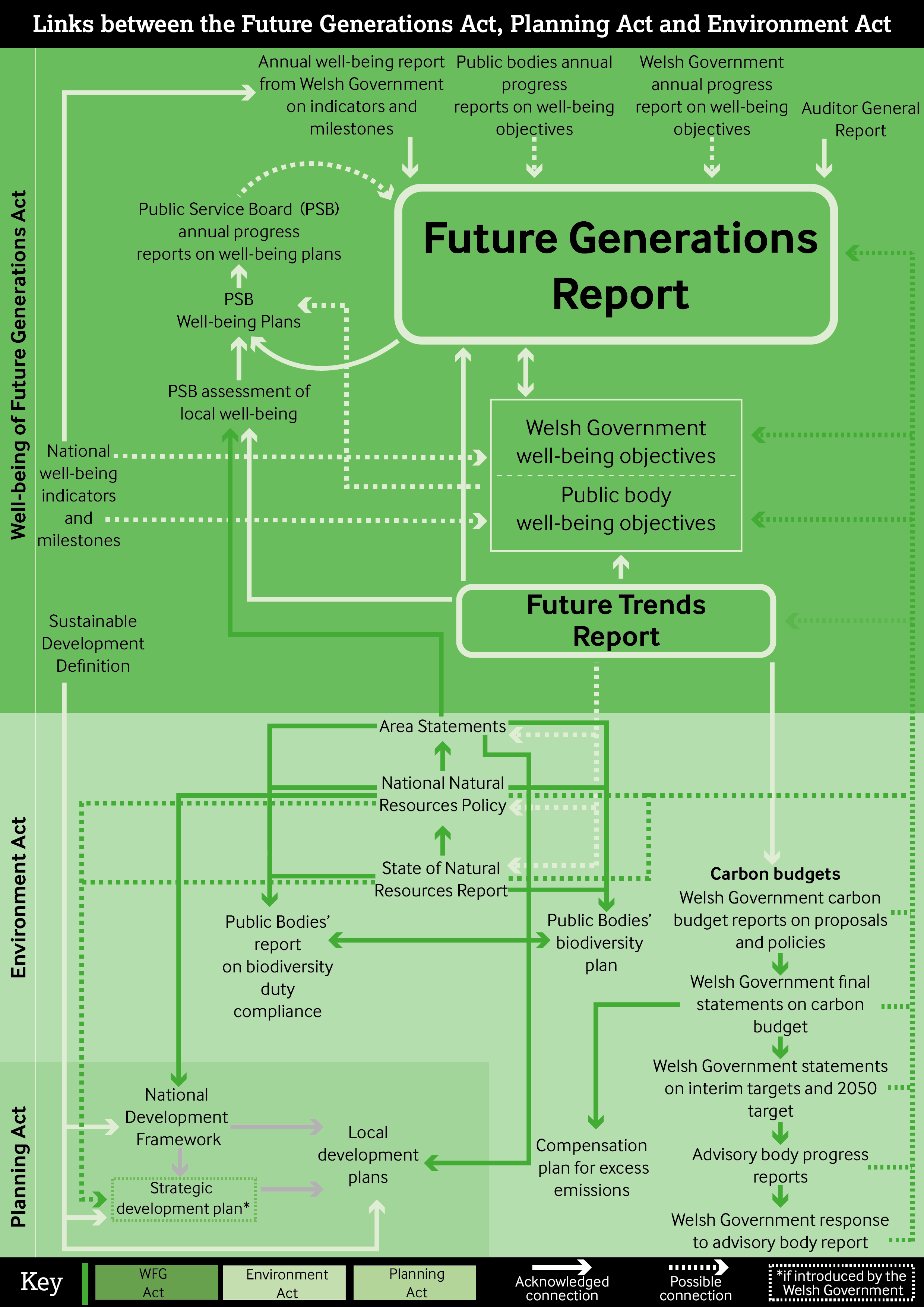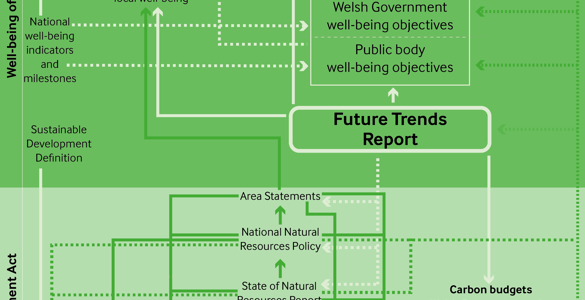Article by Nia Seaton, Chloe Corbyn and Elfyn Henderson, National Assembly for Wales Research Service
This article is taken from ‘Key issues for the Fifth Assembly’, published on 12 May 2016.
How will the Well-being of Future Generations Act, the Planning Act and the Environment Act work together?
The Fourth Assembly passed three seminal pieces of interlinking legislation: the Well-Being of Future Generations (Wales) Act 2015, the Planning (Wales) Act 2015 and the Environment (Wales) Act 2016. All three place a range of new planning, reporting and policy development duties on the Welsh Government and public bodies. Coordinating these different duties will be a key issue for the new Welsh Government and the Fifth Assembly.
The purpose of the Acts
The Well-being of Future Generations (Wales) Act 2015 aims to improve the social, economic and cultural well-being of Wales by placing a duty on public bodies to think and act in a more sustainable and long-term way. The Act puts in place seven well-being goals that public bodies must work to achieve and consider when making decisions. The Planning (Wales) Act 2015 provides a new framework for preparing development plans, including a new National Development Framework. It also aims to streamline planning processes by allowing the Welsh Government to decide on certain planning applications, and introduces a statutory pre-application consultation process for significant applications. The Act also modernises the planning enforcement system. The Environment (Wales) Act 2016 enshrines in law principles and policies for managing natural resources in a sustainable way. It introduces a new biodiversity and ecosystems duty, statutory carbon emission targets and budgets, and a new marine licensing system. It also contains powers over fisheries and waste and extends the Welsh Government’s powers over carrier bag charges.
The importance of coordination
The Fourth Assembly’s Environment and Sustainability Committee’s legacy report highlighted that stakeholders remain ‘unclear about the interrelationship between the three new laws and how they will be delivered on the ground’. The Committee stated that the Acts must be delivered in a coherent and coordinated way to be successful. The infographic sets out the different reporting, planning and policy development duties placed on the Welsh Government and public bodies by the three Acts. It attempts to demonstrate two things. Firstly, the links included within the legislation and secondly, the links that stakeholders have suggested should be made between the different policies and reports. Solid arrows denote definite links in the legislation; potential links suggested by stakeholders are shown as dotted lines.  .
.






